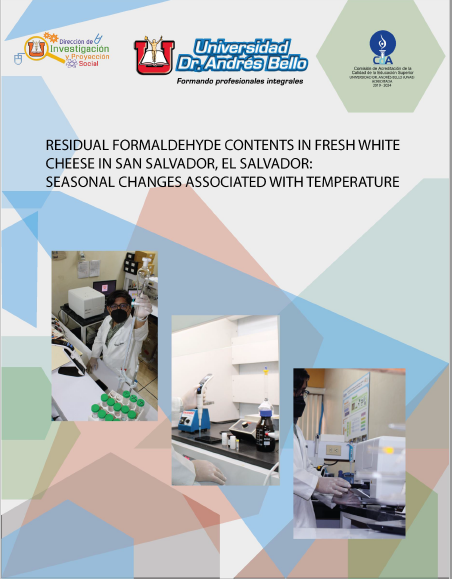
Residual formaldehyde contents in fresh white cheese in San Salvador, El Salvador: Seasonal changes associated with temperature.
Autor: Oscar Peña-Rodas, Mario Pineda-Rivas, Martha Guzman-Rodriguez, Roxana Martinez-Lopez, Roberto Hernandez-Rauda. Categoría: Ciencias de la Salud, Investigación Editorial: Universidad Doctor Andrés Bello Fecha: 2022 Pags.: 23 País: El Salvador Idioma: Ingles Tamaño: 1.2MBA B S T R A C T: Detection of residual formaldehyde (FA) in dairy products could be explained by direct addition of this preservative to extend the shelf life of raw material or final product at room temperature. FA is not authorized as a preservative by international standards and its addition to dairy products is prohibited due to its potentially harmful effects on consumers. Although the carcinogenicity of FA by oral exposure has not been proven, it is also known it cause histopathological and cytogenic changes in tissues at first contact, so its toXicity by ingestion should not be underestimated.
This research determined both residual FA levels in locally produced fresh white cheese and its variation according to the seasons of the year and its association with ambient temperature. None of the FA levels quantified in cheese exceeded the maximum tolerable concentration (2.6 mg/kg) and although average FA contents did not vary significantly with seasonal changes (0.093–0.181 mg/kg), the number of positive cases did, since the highest prevalence occurred in the dry (60.9 %) and transitional dry-rainy (79.7 %) seasons of 2021,
which are characterized by having the highest average ambient temperatures (27.5 ◦C and 28.3 ◦C, respectively).
It was also shown that 79.6 % of the variability of FA-positive samples is explained by changes in the average temperature according to the year´s season.
The association between these variables and quantified levels of aldehyde in raw milk sampled at the plant could indicate that FA was used to prevent milk and/or the final product from decomposing due to the effect of high ambient temperature. In addition, residual FA contents decreased in both milk and cheese, depending on added preservative levels, and the time elapsed prior to analysis.
Volver
